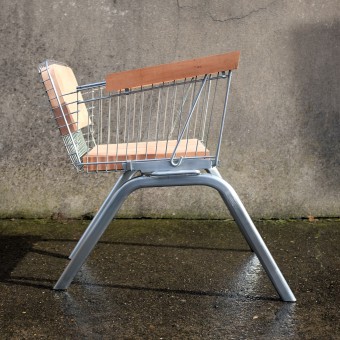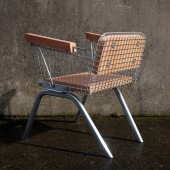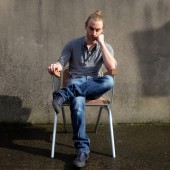Coco Chair Chair by Moses Rowen |
Home > Winners > #53102 |
 |
|
||||
| DESIGN DETAILS | |||||
| DESIGN NAME: Coco Chair PRIMARY FUNCTION: Chair INSPIRATION: The Coco Chair was designed to combat an urban problem, people stealing trolleys from supermarkets and dumping them on the street. As time passes, the likelihood of these trolleys ending up in a canal approaches certainty. Part of the blame rests with the supermarkets which don't provide adequate security measures for their trolleys and seem unwilling or ill-equipped to recover them once they've been stolen. UNIQUE PROPERTIES / PROJECT DESCRIPTION: Coco is an outdoor chair upcycled from old shopping trolleys. The galvanised steel frame has excellent weather resistance and is complimented by seat, back and armrests in Teak or Iroko. OPERATION / FLOW / INTERACTION: The Coco Chair raises awareness about socioeconomic interactions and problems in urban environments by catalysing debate. Its aesthetic simultaneously evokes thoughts of negative issues in society while looking optimistically towards the future. It's also nice to sit in. PROJECT DURATION AND LOCATION: The project started in August 2015 and was completed in September 2016 in Dublin. FITS BEST INTO CATEGORY: Fine Arts and Art Installation Design |
PRODUCTION / REALIZATION TECHNOLOGY: The steel frame was cut and hand bent using pliers and homemade jigs. Welding was not considered an option as it would discolour the raw steel finish. The steel was then hand brushed using increasingly fine grades of sandpaper for a warm satin finish. The Teak was cut, routed and sanded before being fitted to the steel chassis. The seat-pan was made in two parts and then pressed together using 200kg of force for a totally seamless union. SPECIFICATIONS / TECHNICAL PROPERTIES: Dimensions: 600mm x 800mm x 900mm Materials: Hand-formed, brushed, galvanised steel and Teak TAGS: Chair, Upcycling, Urban, Industrial, Trolley, Moses Rowen RESEARCH ABSTRACT: The form is derived from empirical experimentation with upcycled metallic structures. This experimentation resulted in the development of a system for creating fixtures and inherent strength only using hand tools and cold-forming methods. CHALLENGE: Designing a way of making the chair without welding or any additive/adhesive processes was difficult. All metalwork was painstakingly hand bent using a pliers which took time and patience. ADDED DATE: 2017-02-03 18:04:16 TEAM MEMBERS (1) : IMAGE CREDITS: All images: Photographer Karl Rabbitt, Coco Chair, 2016 PATENTS/COPYRIGHTS: Copyrights belong to Moses Rowen, 2016 |
||||
| Visit the following page to learn more: http://www.mosesrowen.com/ | |||||
| AWARD DETAILS | |
 |
Coco Chair Chair by Moses Rowen is Winner in Fine Arts and Art Installation Design Category, 2016 - 2017.· Press Members: Login or Register to request an exclusive interview with Moses Rowen. · Click here to register inorder to view the profile and other works by Moses Rowen. |
| SOCIAL |
| + Add to Likes / Favorites | Send to My Email | Comment | Testimonials | View Press-Release | Press Kit |







